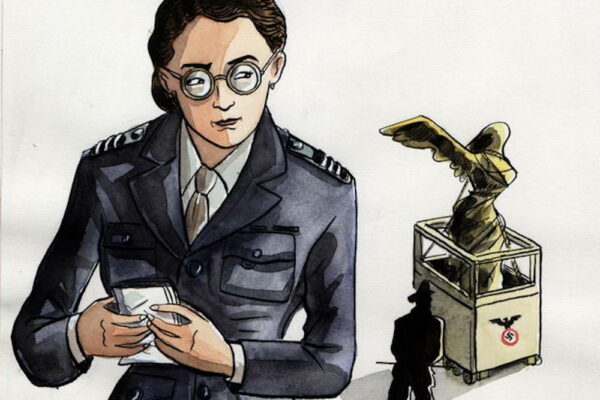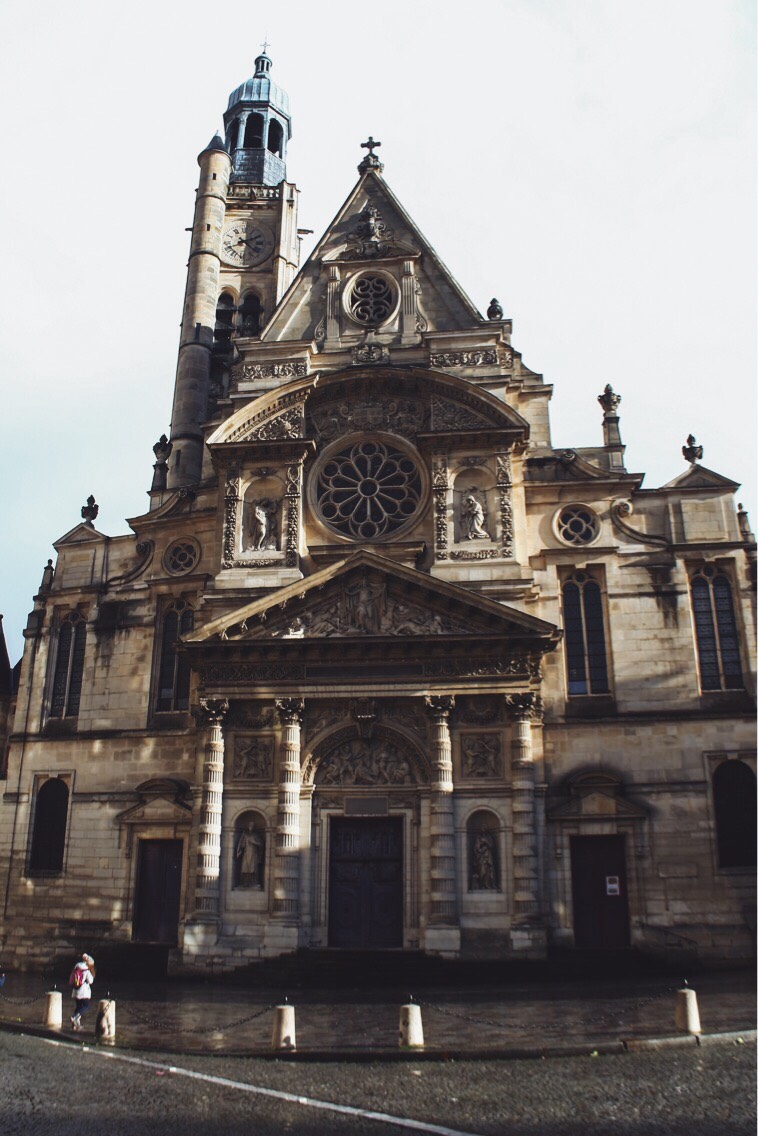
©JakobZuyten
For centuries, the Parisian church of Saint-Étienne-du-Mont has silently peered over shoulder of the famous Pantheon temple in the Latin Quarter, keeping its secrets to itself. It is one of those spaces– and there are many in Paris – that often ends-up as a footnote in the guidebooks, playing second fiddle to the “must-sees.” If you walk deep enough into the narrow halls and peer beside the pulpit under a striking double spiral staircase, you’ll find the remains of Genevieve, patron saint of Paris, the original powerhouse Parisienne, forever resting in her bed of glass– one of the Latin Quarter’s best kept secrets.
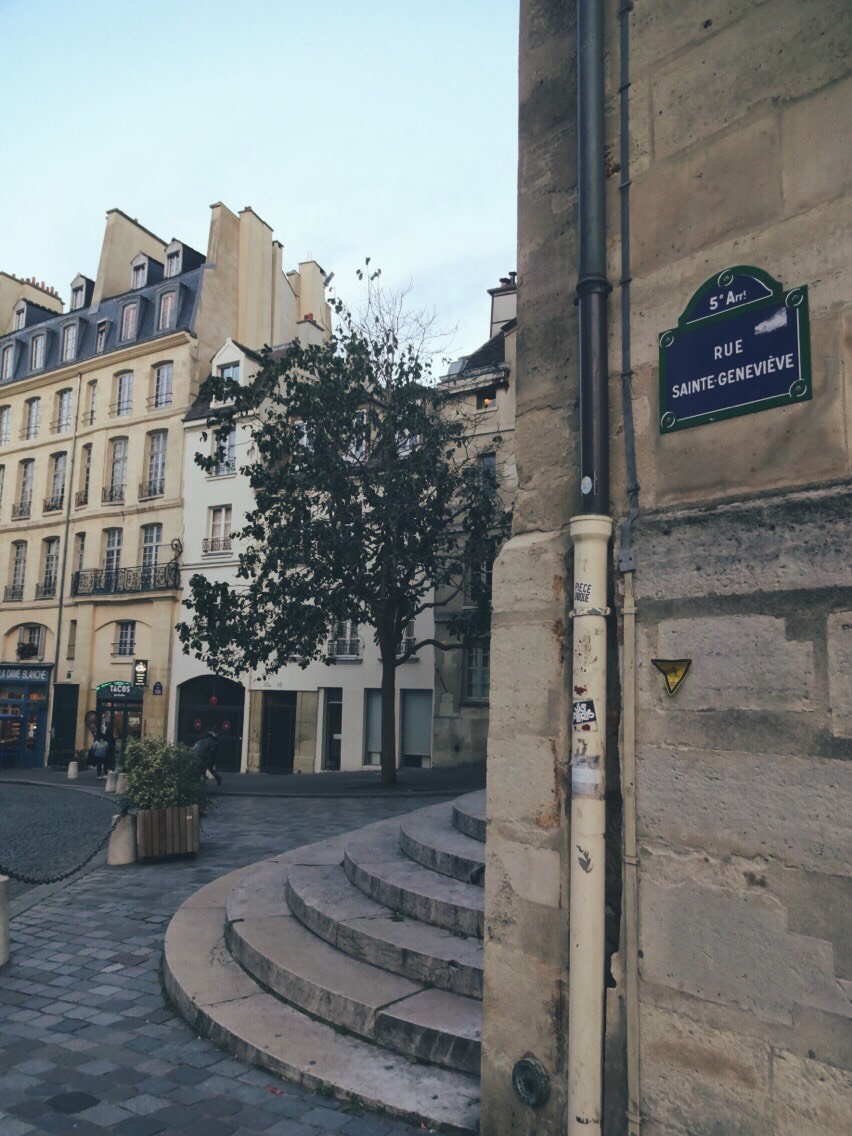
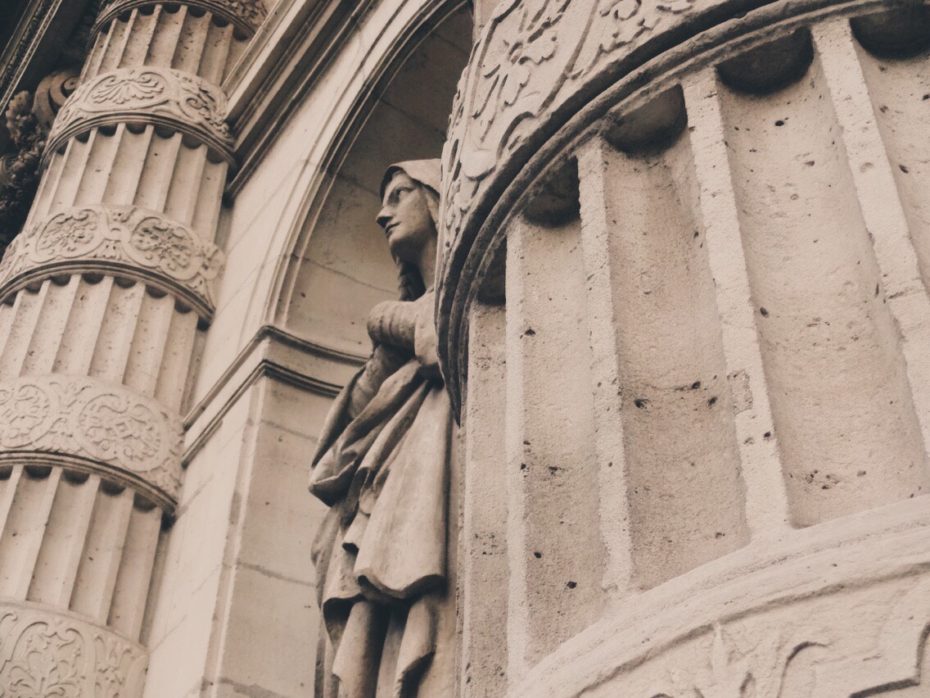
A statue of saint Genevieve stands guard at the church’s entrance.
Here you will find the tombs of a seventeenth century child prodigy, mathematician Blaise Pascal, and the great French playwright Jean Racine. But there is no mention of the murder of 1857, an event in which a priest, after failing to acquire a spell book from the occultist Eliphas Levi, stabbed the Archbishop of Paris with a Catalan knife while screaming, “Down with the Goddesses!” to protest immaculate conception. So, yeah, this isn’t your average Granny’s medieval parish.
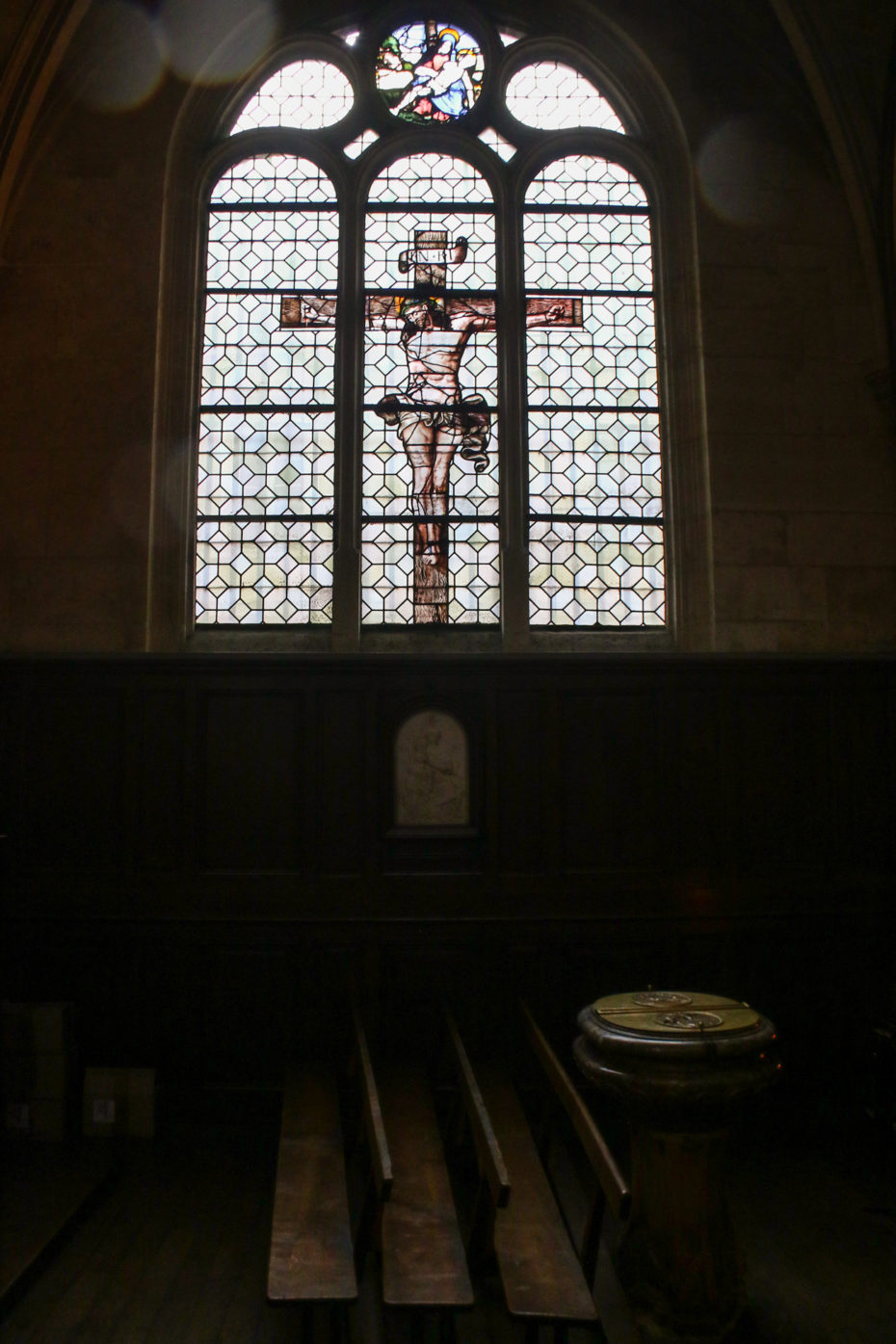
©JakobZuyten
While its first inception was as an abbey built circa 500 AD, the church we see today is the result of a hundred-year expansion project, and it wears that history like a charm bracelet. The entryway is a “Greek temple” of fluted Corinthian columns, and rubs shoulders with Renaissance engravings, a Gothic pinnacle, a rose window, and a breadstick-thin bell-tower.
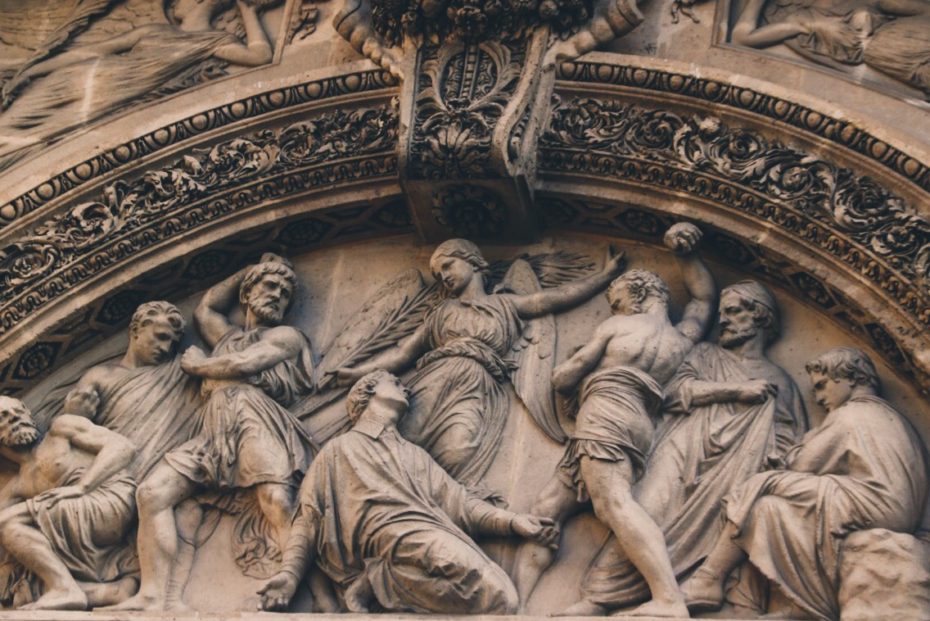
The stoning of saint Étienne. ©JakobZuyten.
Also presiding over the parish by namesake is saint Étienne, a martyr who was stoned to death in 36 AD and whose death is, in turn, depicted in stone above the church doors.
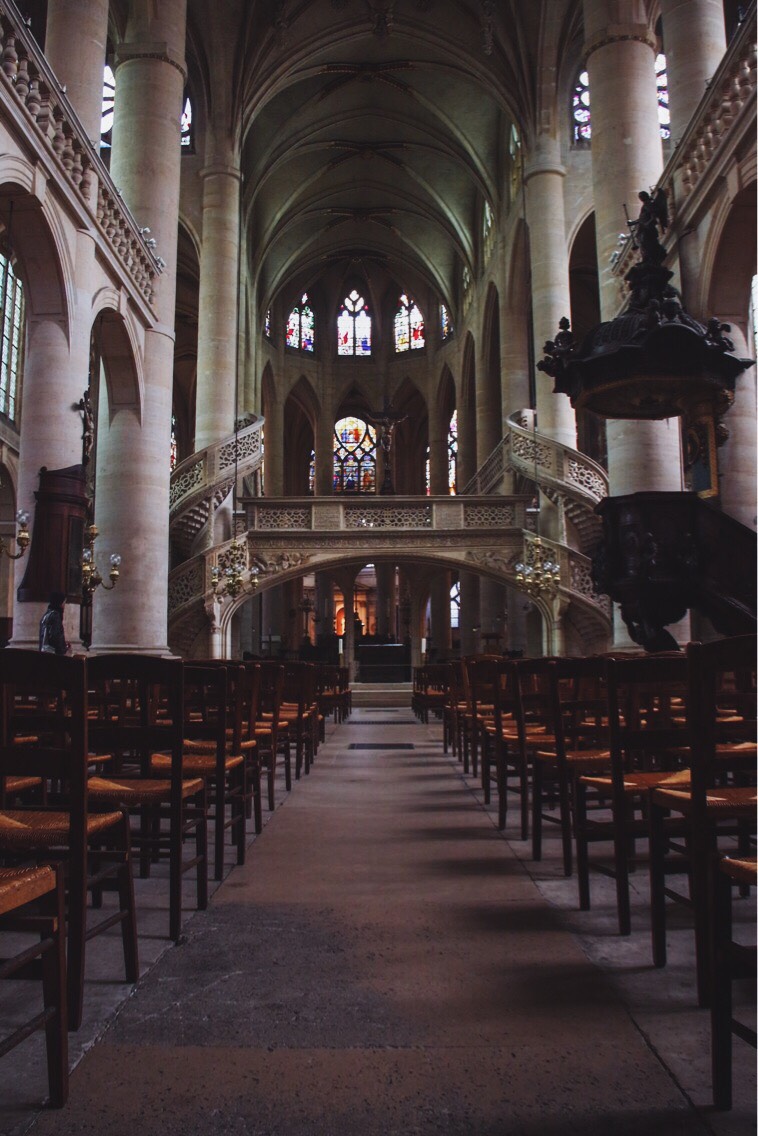
©JakobZuyten
Inside, architectural elements support one-another with the kind of seamlessness that reminds you that you do not know their names, which are “basket handle arches” and “putti” (a squishier word for cherub); “pendiment crowns” and “transepts.”
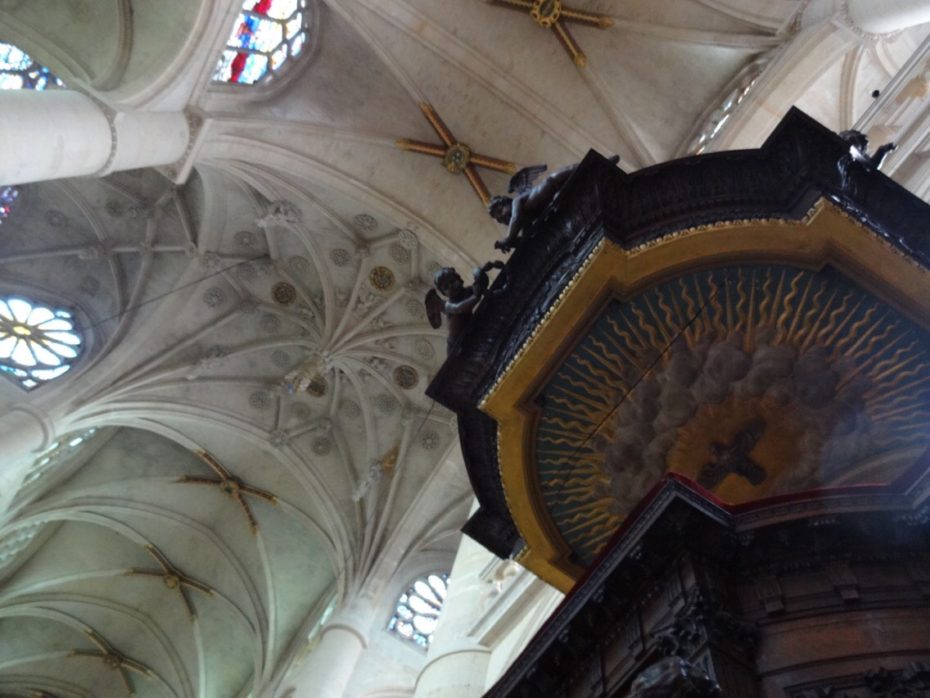
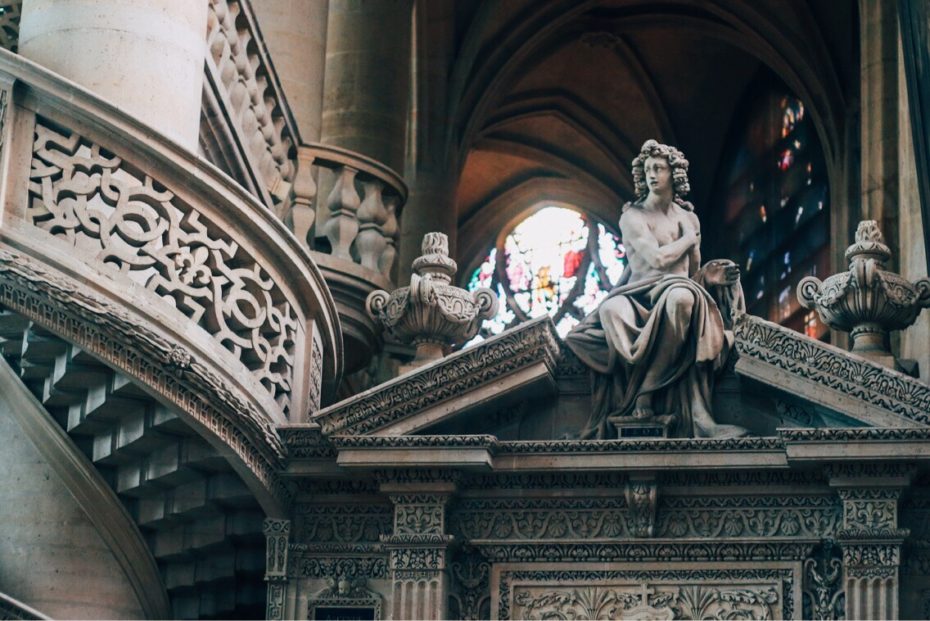
©JakobZuyten
In the church’s centre, two angels bookend an immense, carved stone partition called a “jube” or “rood screen.” This is the last jube, I am told several times, in all of Paris. Its function? To separate clergy from laity. To embellish, instead of draw, the line between the sacred and the profane.
And now we come to Genevieve, “Shepherdess of the Parisian People” and the lady of this church. They say she was outspoken, and well-spoken. They say she lived well into her eighties, and could relight a candle blown-out with the Devil’s breath. When Attila the Hun rode towards Paris, she was said to have diverted him and saved the city with her 800-horsepower prayer. She was such a valuable negotiator to Clovis I, that she was initially buried beside him and his queen in the neighbouring, but ultimately destroyed abbey.

The word “destroyed” comes up often when we talk about saint Genevieve. So does “melted,” “removed,” “scattered,” and “lost.” Demolished: her first abbey. Melted: her only body. Her original shrine was incinerated at the town hall during the French Revolution, her ashes tossed in the Seine. The remains of her remains became relics, and eventually rumour had it that a bigger, grander church would be made to house them. It was, but she didn’t get to stay (men only until very recently). You can still visit it, though – in fact, it’s hard to miss. It’s the Pantheon.
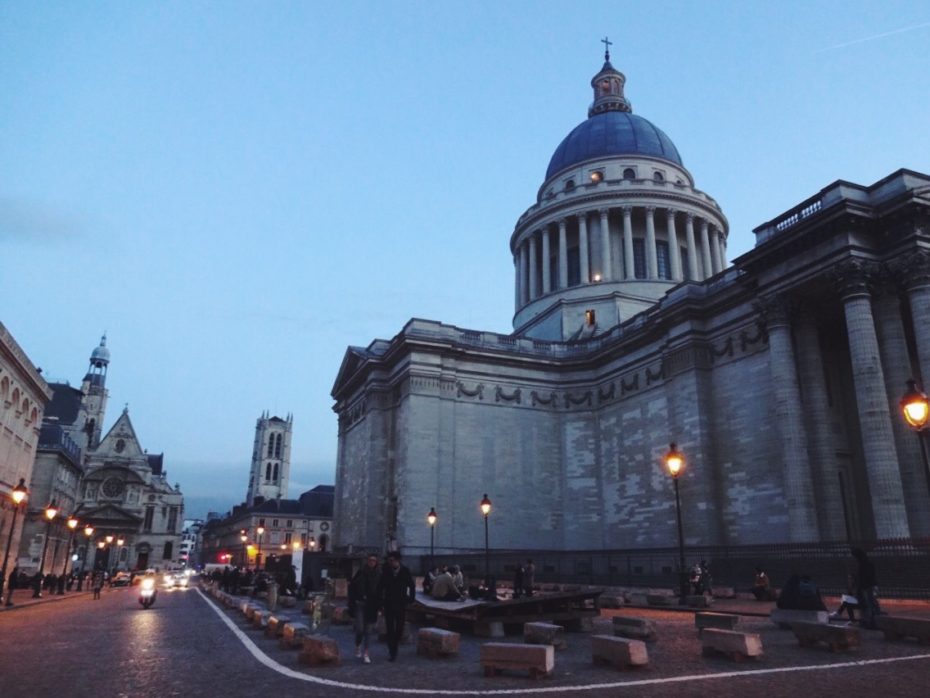
Instead, Genevieve sleeps at Saint-Étienne-du-Mont, behind the secular mausoleum that should have been her church, inside a gilded, glass coffin that holds only her broken tombstone, but could still give Snow White’s a run for its money…
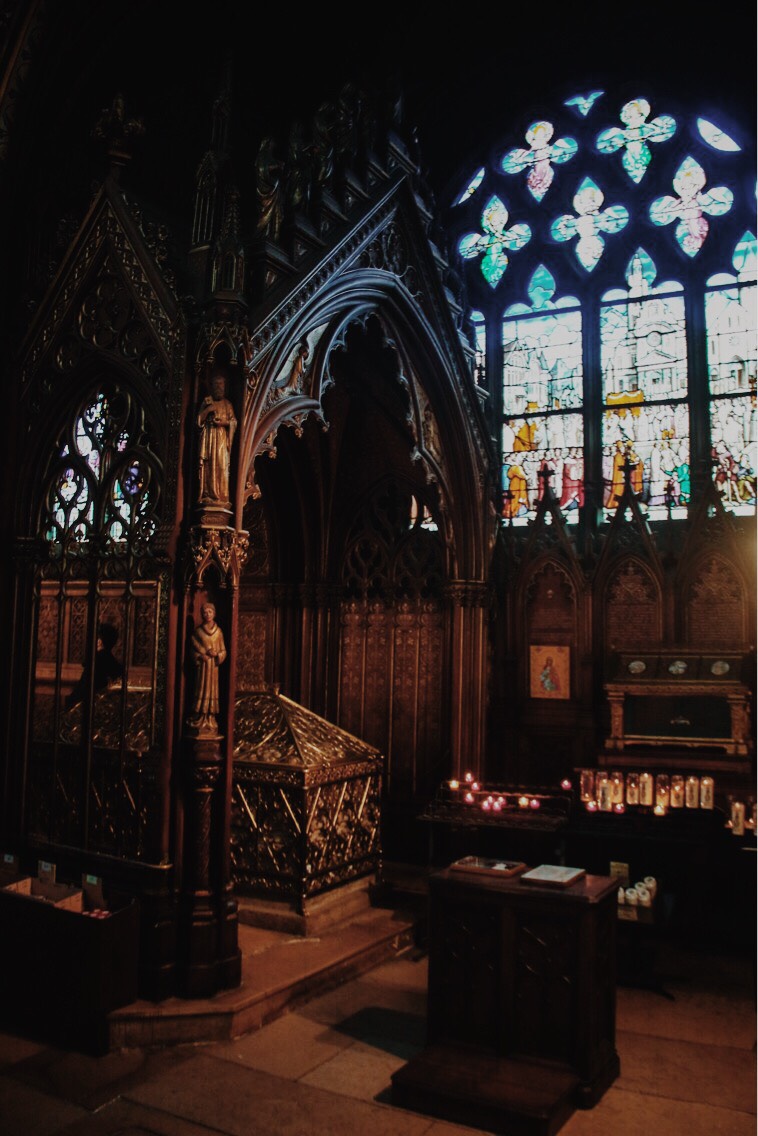
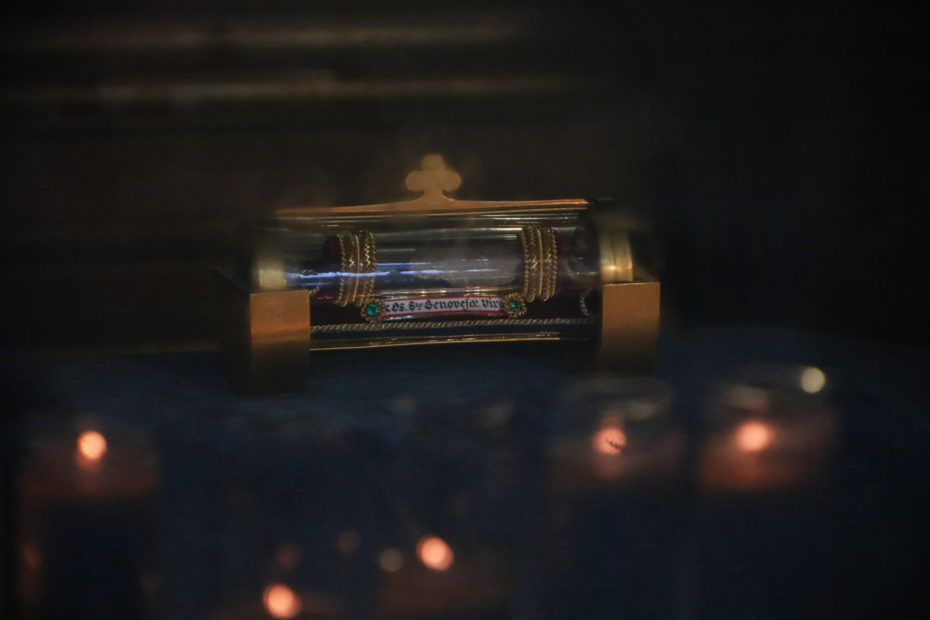
©JakobZuyten
“To its left,” a priest tells me, is a reliquary containing “what is believed to be her hair.” To its right is another believed-to-be-relic: a bit of her femur, smaller than a peanut but the heartiest remainder of a woman who clearly deserves, in layman’s terms, to be dubbed the patron saint of another strength entirely: holding oneself together.
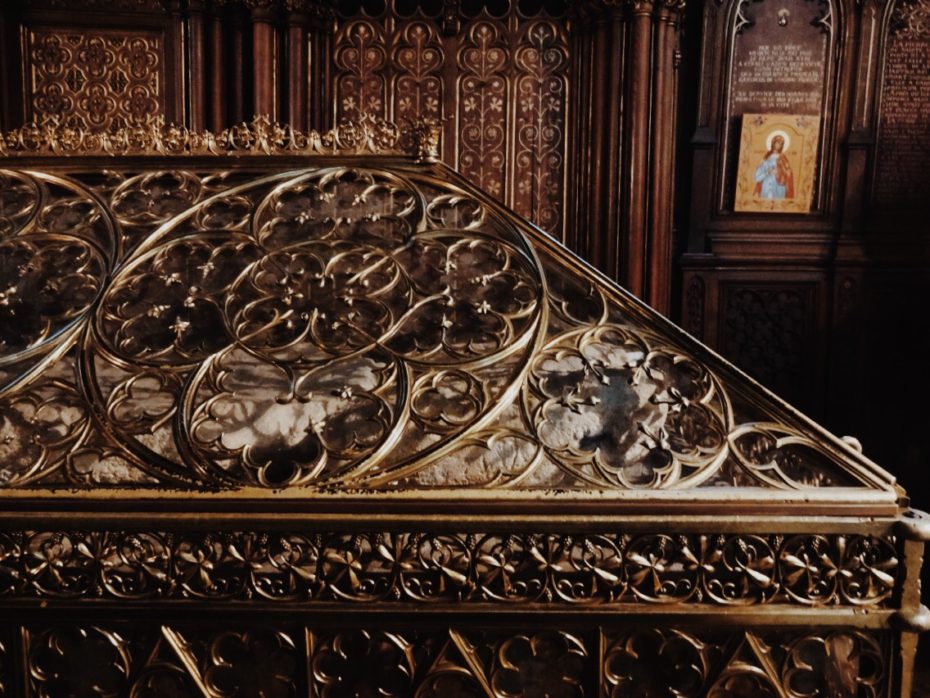
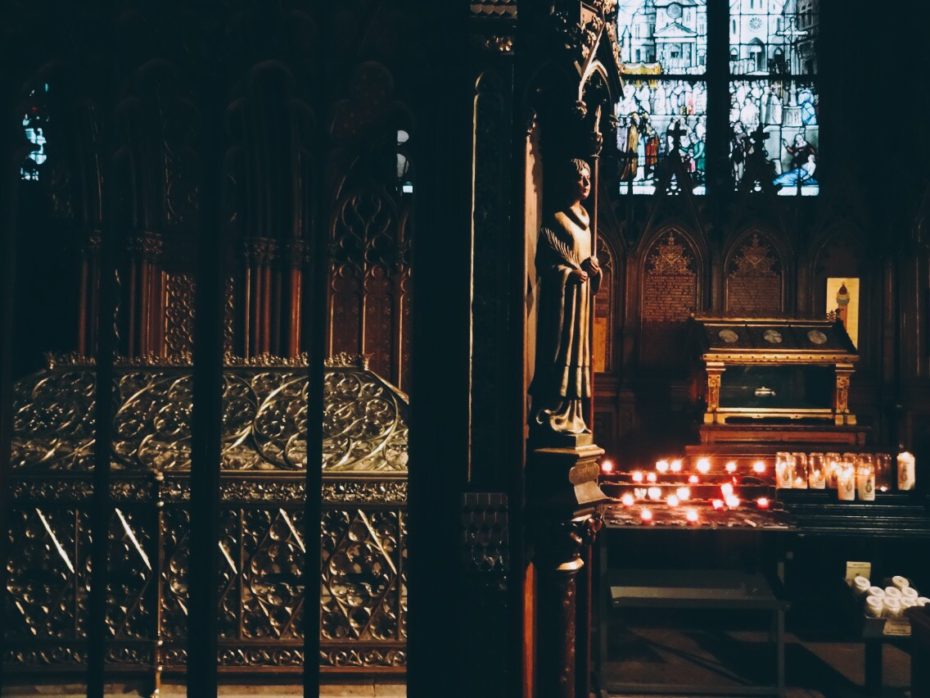
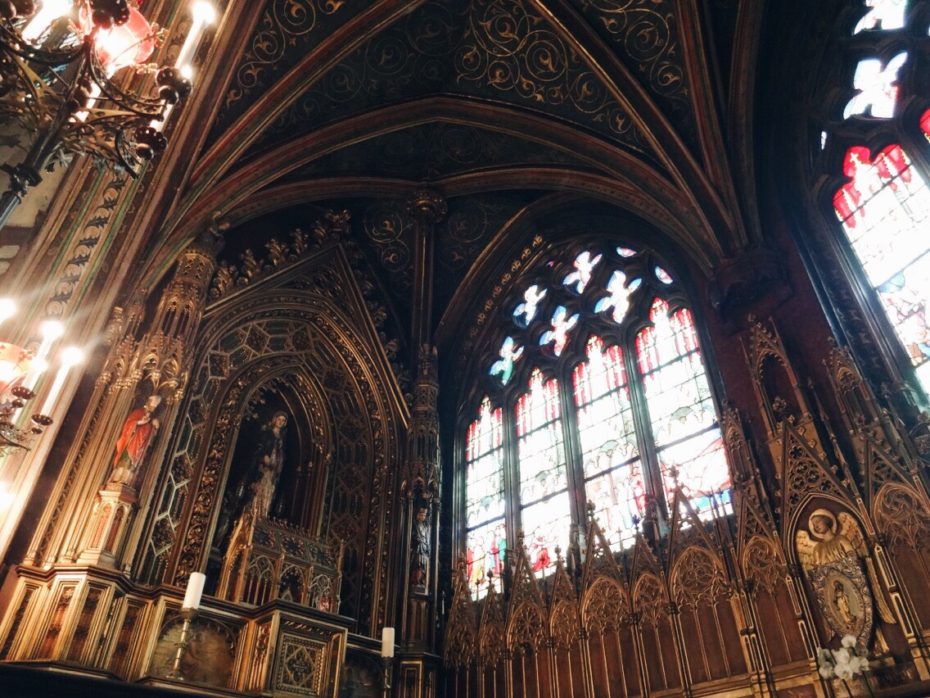
If you can’t make it past the queues for the Notre-Dame, we suggest you make your escape up the winding rue de la Montagne-Sainte-Geneviève (yes she has a road/mountain named after her, too) to find this secret stunner waiting at the top of the hill, overlooking the left Bank of the Seine.
P.S. Go round to the side of the church, and you’ll find the time-travelling steps where Hemingway picks up Owen Wilson in Woody Allen’s Midnight in Paris.
And for more Paris secrets, “Don’t be a Tourist in Paris” is here.









